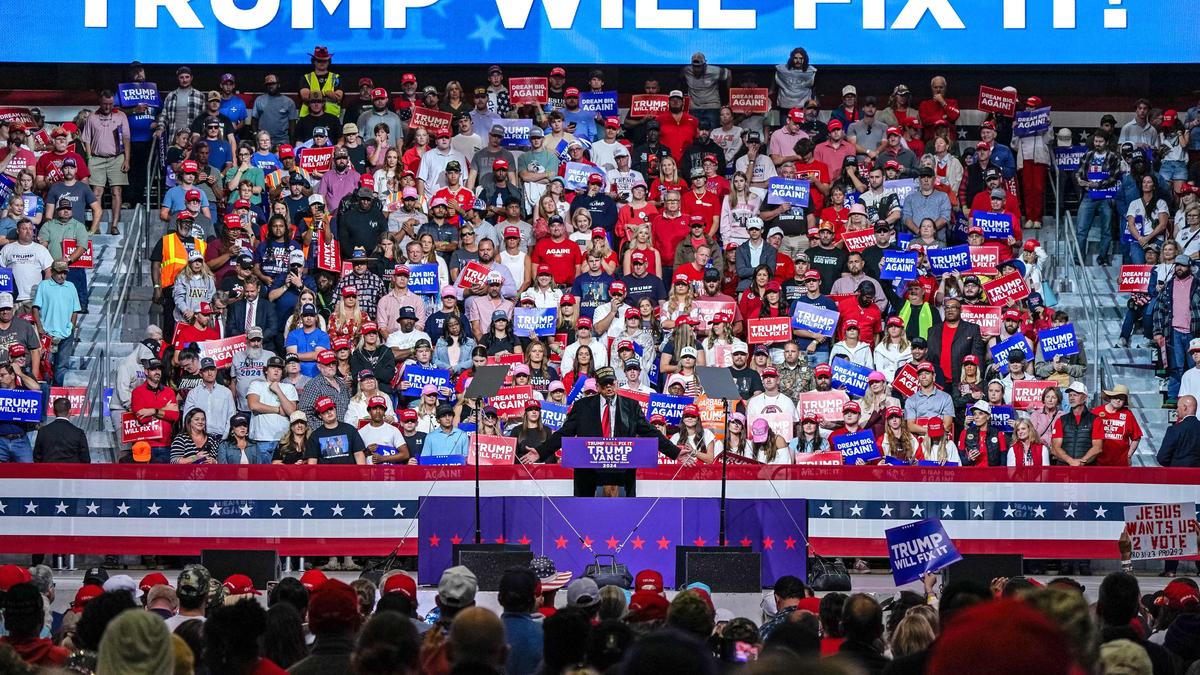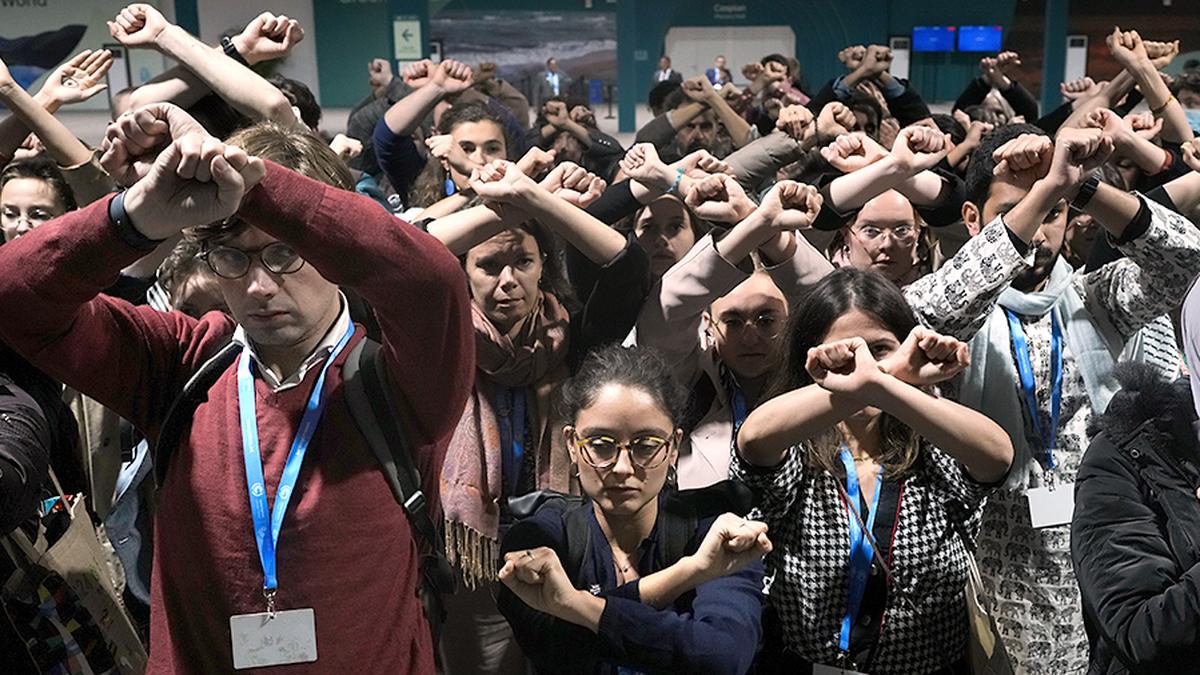About two weeks ago, U.S. Republican presidential candidate Donald Trump walked into a McDonald’s at Pennsylvania, threw on an apron, and cheerfully began serving french fries to customers. The act was aimed at trolling the Democratic Party candidate, Kamala Harris, who has often said that unlike her billionaire opponent, she is middle class and understands the concerns of working-class Americans. Through the stunt, Trump also wanted to underscore that he stands with working-class voters. The election outcome hinges on a few swing States, and Pennsylvania in particular, which has seen a steady decline in industrial manufacturing over decades, could prove pivotal in determining the winner.
The idea of false consciousness
It is no secret that Trump appeals to the working class in America, especially, but not exclusively, white working-class voters. Why is this the case?
In his seminal book in 2004, titled What’s The Matter With Kansas: How Conservatives Won The Heart of America, journalist Thomas Frank explored the question that follows from the above: “Why do so many decent, average people support a politics that does them such obvious harm?” He studied Kansas, “a place with a radical past but which has become in recent decades the greatest culture-war battlefield of them all”. Frank concluded that “culture wars allowed the GOP (Republican Party) to capture the populist language of social class and present themselves as the embodiment of working-class anti-elitism. At the same time, thanks to the changing nature of the Democratic Party, real populism largely disappeared from the spectrum of the acceptable.”
In short, Frank argued that Republican leaders encouraged ‘false consciousness’. Though Karl Marx never actually used the term, false consciousness is a concept derived from his theory on social class and has been developed over time by many theorists. While class consciousness refers to the awareness of one’s economic position and interests, false consciousness encourages people to act in ways that are counter-productive to their own interests and concerns. False consciousness emerges in a society that is unequal, where power is vested with a few elites. Workers think and act in certain ways because the capitalist system, and the values of the elites who control the system and run its institutions, prevent them from recognising the very structures that oppress them. In Frank’s straightforward description, false consciousness is simply when workers “insist on re-electing the very people who are screwing them”.
One way of fostering false consciousness is through the media: when, for example, Fox News constantly berates the “elite”, the workers believe that the channel is with them. Another way is through culture wars, as Frank said. Culture wars, or conflicts between liberal and conservative groups, are fought over identities such as race, gender, and sexual orientation. As certain groups fight more and more for their rights, the backlash is more severe, especially from the religious right, who believe that the nation is losing its moral compass; these are the communities that the Republicans are more aligned with. The most hotly debated issues of today — abortion rights, immigration laws, transgender rights, etc. in the U.S. — are examples of culture wars. These issues become sites of contestation as they largely define the values of the nation.
The possibility of Trump again
Does this mean then Trump appeals to people simply by being shrewd; promising to restore “lost values”; appealing to workers’ worst prejudices, whether sexist, racist, or xenophobic; and making them forget about their primary economic interests? While there is truth to the fact that culture wars and fear-based appeals garner votes, these are only part of the picture.
In an analysis of Trump’s 2016 campaign, Jared Abbott, a researcher at the Center for Working-Class Politics, found that “Trump used pro-worker rhetoric nearly three times as often — and anti-economic elite rhetoric more than twice as often — as he brought up controversial social issues.” Even when Trump did repeatedly bring up illegal immigration, he framed it in such a way that translated into protection for the working class. Trump has also advocated for fair trade and repeatedly spoken about how wages are falling. This is evidenced by data: the share of people considered low-income has gone up from 27% in 1971 to 30% in 2023, according to the Pew Research Center.
Despite his rhetoric, Trump has had a less-than-admirable record on labour as President. He reduced by millions the number of workers who were eligible for overtime pay under a previous rule brought in by Barack Obama. According to a note by the Center on Budget and Policy Priorities, the 2017 Tax Cuts and Jobs Acts he introduced was “skewed towards the rich, eroded the U.S. revenue base, and failed to deliver promised economic benefits.” The note said, “Like the Bush tax cuts before it, the 2017 Trump tax cut was a trickle-down failure.” His Treasury Secretary was from Goldman Sachs. He also nearly destroyed the Affordable Care Act.
His views have not changed since then. At the McDonald’s outlet, Trump dodged a question on whether he would support an increase in minimum wage. On overtime pay, he said at a rally, “[As a businessman], I hated to give overtime. I shouldn’t say this. But I’d get other people in. I wouldn’t pay.” He has promised manufacturing jobs if elected, but data from the U.S. Bureau of Labor Statistics show that by the time Trump stepped down as President, there were 1,78,000 fewer manufacturing jobs in the U.S. than when he became President. (Although Republicans argue that this was a result of the pandemic, and that pre-COVID data show that there was a spurt in manufacturing jobs during his presidency). While Harris is pro-union, Trump is avowedly hostile to the idea. He has pledged to block any increases to the eligibility age for Medicare coverage. And so on and so forth.
Yet, polls show that this is a neck and neck race and there is a great possibility that Trump can be re-elected. The fact that ordinary Americans may be willing to give a crude and impulsive billionaire, who has only always served his own interests, another chance at the top does not reflect on them or indeed Trump’s own clever campaigning strategy; it simply reflects on the failure of previous leaders in improving their condition through decades of pro-capital policies.
Published – November 05, 2024 08:30 am IST




